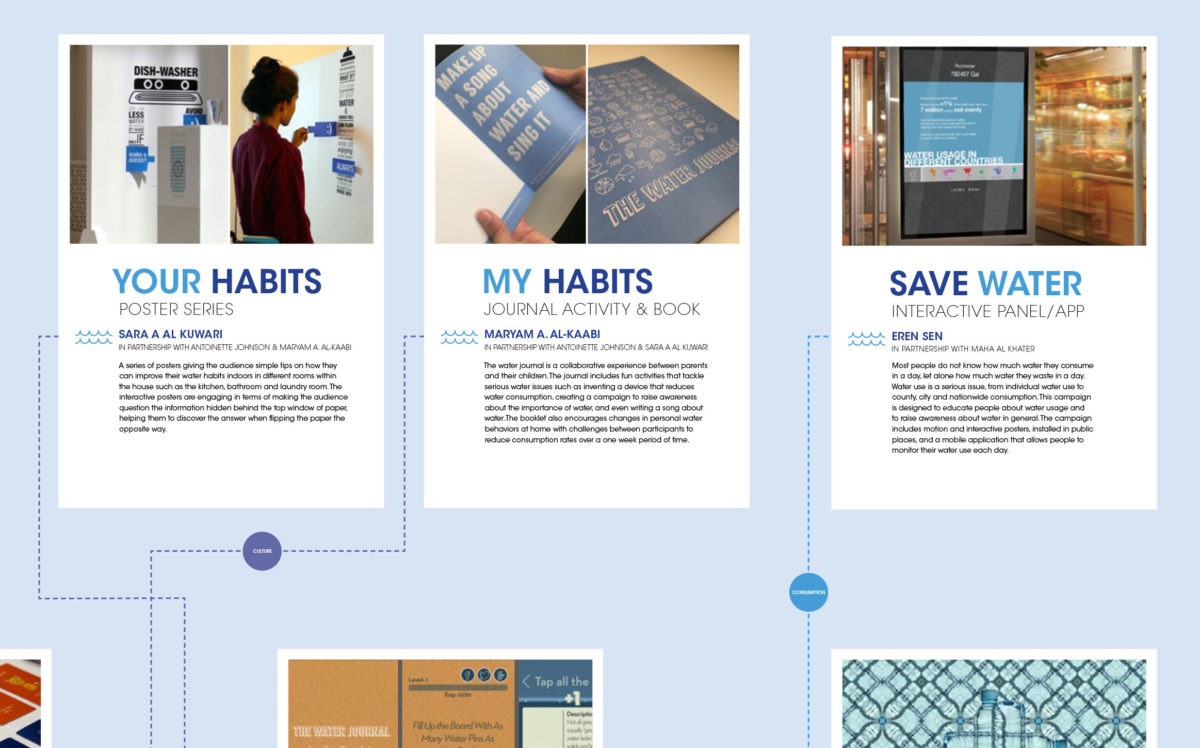Kelly Murdoch-Kitt and Denielle Emans work together in an ongoing series of semester-long collaborations with their respective students to make meaningful connections between the concept of sustainability and people’s day-to-day lives. Working remotely as cross-cultural teams, students explore ways design can address sustainable behaviors and lifestyle choices around diverse topics such as food, water, environmental degradation, social justice and cultural preservation. The semester typically culminates in a public exhibition on each campus, enabling students to share their concepts and communications with their local communities. Additionally, the most recent student exhibition, “Co-creating sustainable futures: American and Middle Eastern visual design students explore behavior change” was presented at the 2015 Association for the Advancement for Sustainability in Higher Education (AASHE) Conference in Minneapolis, MN, USA.
gulftogreatlakes.org
restartexhibit.com
Kelly Murdoch-Kitt is Assistant Professor in the Graphic Design program at Rochester Institute of Technology’s College of Imaging Arts and Sciences. She teaches and works primarily in the areas of user experience and service design. Her recent collaborations exploring the socio-cultural benefits of cross-cultural design education and the benefits of integrating sustainability challenges into project-based design courses. Kelly and her collaborator, Denielle Emans, recently presented research at Spaces of Learning: AIGA Design Educators Conference and the 2015 Association for the Advancement of Sustainability in Higher Education (AASHE) Conference and Expo, “Transforming Sustainability Education.” Recent journal publications include “Design Nexus: integrating cross-cultural learning experiences into graphic design education” in Studies in Material Thinking 11: Re/materialising Design Education Futures (co-authored with Prof. Denielle Emans, 2014) and “Sustainability at the forefront: educating students through complex challenges in visual communication and design” in Interdisciplinary Environmental Review (co-authored with Kelly Norris Martin & Denielle Emans, 2015).
Denielle Emans is an Assistant Professor in the Graphic Design Department at Virginia Commonwealth University in Qatar, specializing in the area of experiential design in relation to the conceptualization, development, and execution of visual messages for social change and sustainability. As a designer, she has worked to create print, web, and motion design solutions for clients ranging from software specialists to international institutions. Denielle has published her research in a number of academic journals and presented at numerous conferences across the world. She holds a Master of Graphic Design from North Carolina State University’s College of Design and a Bachelor of Arts in Communications from the University of North Carolina, Chapel Hill. Denielle is currently a Ph.D. Candidate within the Centre for Communication and Social Change at the University of Queensland in Brisbane, Australia.
Recipient of recognition in the Design Incubation Communication Design Awards 2016.
